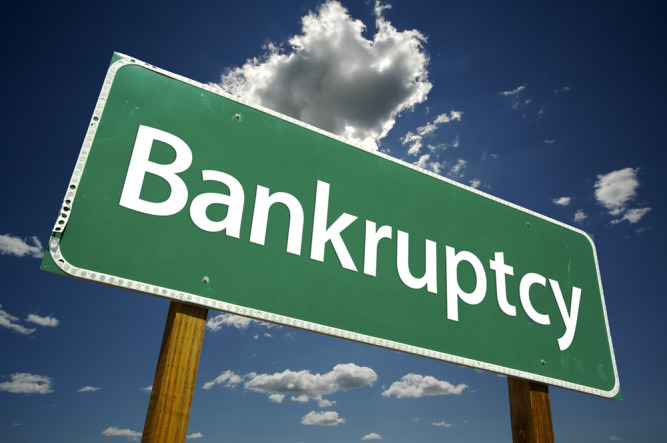
Bankruptcy: No longer a free ride
When a community association receives notice that a delinquent owner has filed a petition for bankruptcy, the initial reaction may be one of despair. Will we ever be able to recover what we are owed? Does this mean the owner gets a “free ride?” What can and can’t we do with regard to collecting amounts that continue to accrue? These questions are common, and bankruptcy can be a complicated subject, rife with time-sensitive deadlines, special bankruptcy rules, and specific protections afforded to the debtor by which a creditor must abide.
An owner may file for bankruptcy for a variety of reasons, including one of the most popular reasons: to take advantage of the Bankruptcy Code’s automatic stay. The automatic stay prohibits creditors from proceeding against a debtor until such time as the automatic stay is lifted or the bankruptcy case is dismissed. A creditor attempting to take collection action after it has received notice of the debtor’s filing of bankruptcy violates the automatic stay and can subject the creditor to sanctions by the Bankruptcy Court.
There are two common types of bankruptcy under which owners usually file: Chapter 7 and Chapter 13. A Chapter 7 filing by a debtor generally indicates that the debtor’s outstanding financial obligations far outweigh his ability to pay his creditors, even if given several years to do so. A Chapter 7 bankruptcy is a straight liquidation of the debtor’s assets. In this type of bankruptcy, there is generally very little for a community association to do but wait to see what the outcome of the liquidation of assets yields. Unfortunately, it often results in the entire unpaid assessment balance of the owner being discharged. A foreclosure of the debtor’s home also usually follows the liquidation.
In 2005, President Bush signed sweeping bankruptcy reform legislation into law. The goal of the revised Bankruptcy Code is to prevent abuse of the bankruptcy system by debtors. All debtors now filing for bankruptcy are means-tested to ensure they are filing under the correct chapter in bankruptcy. The effect of this legislation has given rise to an increase of Chapter 13 bankruptcy filings and a reduction of Chapter 7 filings.
Most owners now file petitions for bankruptcy under Chapter 13. Under a Chapter 13 filing, a debtor essentially enters into an agreement with the Bankruptcy Court to reorganize his debt rather than liquidate his property. The debtor proposes a Chapter 13 Plan to pay secured creditors (including community associations with liens) the full amount the debtor owed at the time of the filing. This is called the pre-petition amount. The Plan must be approved by the Bankruptcy Court to ensure that all secured creditors are paid in full and that unsecured creditors receive at least as much money as they would have received had the debtor filed under a Chapter 7 liquidation. A Chapter 13 Plan generally last between 36 and 60 months. During the time the debtor is in the Chapter 13 Plan, the debtor pays the Chapter 13 Bankruptcy Trustee a monthly amount as outlined in the Plan. The Trustee then makes monthly disbursements to the creditors until the pre-bankruptcy debt is paid in full. We receive checks from the Bankruptcy Trustee usually ranging from $18.00 to $100.00 per month that generally will, over time, pay the full amount of the debtor’s balance to the association, including attorney’s fees.
Being protected by the automatic stay by no means allows a Chapter 13 debtor a “free ride” to accrue further debt while the Plan is in effect. Part of the Bankruptcy Court’s order in granting a Chapter 13 Plan states that the debtor may not accrue any new debt while the Plan is in effect. This means that a debtor must keep current on all post-petition assessments and charges owed to a community association that become due after the filing for bankruptcy. If a debtor fails to keep current on assessments and charges that are incurred after the bankruptcy filing date, he is in violation of the Chapter 13 Plan. A creditor may then petition the Bankruptcy Court for a relief from the automatic stay in order to proceed with collections against the debtor for both pre-petition and post-bankruptcy debt. This process involves costs associated with filing for relief and court appearances by the creditor’s attorney. It is usually advisable to pursue this route only if a debtor is several hundred dollars or more in arrears in post-bankruptcy debt in order for this action to be cost-effective. Once a relief from stay is granted, the community association may continue collection efforts against the owner.
As soon as a community association becomes aware of a owner’s filing of either a Chapter 7 or Chapter 13 bankruptcy petition, two separate accounts for that owner should be created: a pre-petition account (including all amounts owed prior to the filing) and a post-petition account (which includes all amounts owed beginning with the date of the filing and from that date forward). It is very important that the association alert its legal representative as soon as it is discovered that an owner has filed for bankruptcy. There are strict deadlines and procedures that must be followed in order for the association’s attorney to file Proofs of Claim and other legal forms that will ensure the association recovers as much money as allowed by the Bankruptcy Code. Missed deadlines and failures to follow proper legal procedure with the Bankruptcy Court can allow a debtor to be discharged from paying pre-petition amounts owed to the association.
Bankruptcy is a very difficult and ever-changing area of law. It requires attention to detail and strict adherence to the Bankruptcy Code. If an association has any questions about its rights and responsibilities when it comes to a bankruptcy petition filing, it should contact its legal counsel.